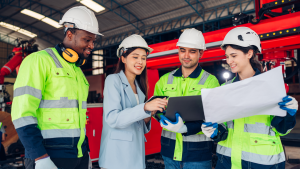We know that engaging employees in ISO implementation, regardless of the standard, is a major challenge. Typically, employees have little to no knowledge of management standards, causing confusion, fear, and anxiety. On the other hand, without people’s engagement, implementation becomes very difficult, making it almost impossible to achieve good results.
Another factor to consider is that without engagement in the implementation project, it will be much more complex to keep employees engaged afterward. Without this ongoing involvement, the system cannot sustain itself, and the company will spend much more resources trying to maintain its processes and their quality.
Therefore, in our content today, we will provide tips on how to engage employees in ISO implementation and achieve superior results. For this, we will take the implementation of ISO 9001 as an example, but only for didactic reasons. The teachings we present here apply to any other standards – such as 14001, 27001, 37001, 45001, among others.
Engaging Employees in ISO Implementation
In general, there are 4 fundamental aspects that will determine whether employees will engage in ISO 9001 implementation. If you follow these 4 recommendations, the chances of engagement increase significantly, as well as the results of the system. Let’s go through them!
1st: Communicate with people before starting the implementation process
The biggest mistake companies make is to start implementing the system before informing people. Imagine operating a process and suddenly, out of nowhere, someone arrives just “pushing a change down your throat”? People may be offended, scared, or think it’s a problem with their work when it’s all just an improvement.
Therefore, clear and transparent communication is essential from the beginning! Communicate clearly and transparently the objectives of ISO implementation, why it is important for the organization to obtain this certification, and most importantly, how it will benefit the company and the employees.
Once you explain the “why,” then we move on to the “what.” Thus, people can start things understanding that what is coming are improvements. Similarly, maintaining open communication throughout the process helps engage and raise awareness among people towards continuous improvement and certification!
2nd: Train and empower your employees on the implemented standard
Training and empowerment are vital mainly for two factors. The first is that even after good communication, people may still not fully understand the process and thus not engage. The second is that many employees will need certain competencies to execute quality routines, and if they do not have them, it will also be more difficult for them to engage.
Therefore, always offer adequate training on the requirements of the implemented ISO standard and on how employees can contribute to its implementation and, more than that, to the system’s compliance! This will not only increase knowledge but also help create a sense of ownership and responsibility for the quality and processes of your organization.
3rd: Involve people in the process and not just in occasional activities
Another common mistake companies make is involving people only in parts of the process, not the whole. A typical example is not involving the employee in process modeling and then just demanding changes from them.
You need to include employees in all stages of the process. That is, from the initial analysis to the implementation and continuous maintenance of the QMS. For this, there are several possibilities:
- Foster participation in workgroups and studies;
- Include people in conducting internal audits;
- Encourage documentation review;
- Foster the identification of process improvements;
- Include people in process handling and analysis;
- Carry out continuous communications about the QMS status;
- And many others.
4th: Implement recognition and incentive actions that reward engagement in the system
A major problem with implementing an ISO standard is that people see it as extra work, even though improvement actions are part of any process. Over time, standard routines become normal and part of everyday life, but at the beginning, things can be complex.
Therefore, implementing actions that reward people can help attract more employees to the implementation and maintenance of implemented management systems. So, whenever possible, recognize and reward the efforts of employees involved in ISO implementation.
There are several ways to do this, which may or may not involve the organization’s resource needs. The most common ones range from simple public praise to financial incentives or professional development opportunities. Additionally, this can be done through a more elaborate formal recognition program, which can greatly enhance our engagement results!
Therefore, assess your context and decide on the best ways to reward people!
Engaging employees in ISO implementation goes beyond any certificate!
In short, it is worth emphasizing that engaging employees in the implementation of any ISO standard goes far beyond the simple act of obtaining a certificate to hang on the wall. Implementing an ISO standard is just the first step towards a culture of excellence, productivity, and optimization!
Therefore, our real challenge is to sustain the QMS over time. And to keep employees engaged, it is essential to involve them in the entire process, from start to finish! We need to create an environment that promotes active participation of people in the management system and in the improvements we propose. Without this, any system tends to fail.
We need to understand that by transforming ISO implementation into a collaborative journey, where everyone is responsible for the success of quality and processes, our companies can guarantee much more results. This will translate into more customer satisfaction, improvements in daily work, more profits for the company and several other benefits for all stakeholders!











